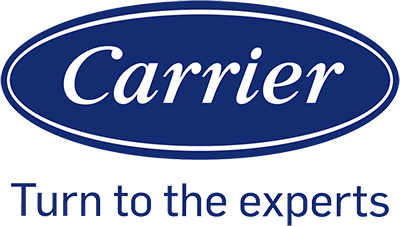When we think about energy-efficient homes, we often focus on insulation, windows, or appliances. What we don’t always consider is how much our air ducts matter. Clean air ducts help heating and cooling systems run more efficiently, which saves energy and lowers costs.
Dirty ducts make systems work harder, wasting energy and reducing the comfort of our living spaces. They can also circulate dust, allergens, and other particles that affect indoor air quality. By keeping ducts clean, we protect both our efficiency goals and our health.
As we look closer, we’ll see how clean ducts connect to better energy performance, healthier air, and long-term savings. This simple step supports a more sustainable home and helps us get the most out of every effort we make toward efficiency.
The Link Between Energy Efficiency and Clean Air Ducts

Clean air ducts help reduce wasted energy, keep heating and cooling systems running smoothly, and lower monthly costs. When ducts stay dirty, airflow weakens, equipment works harder, and energy consumption rises.
How Dirty Air Ducts Hinder Energy-Efficient Homes
When dust, debris, or mold collect inside air ducts, airflow becomes restricted. This restriction forces the heating and cooling system to push harder to move air through the house. Over time, this extra effort reduces energy efficiency and increases wear on the system.
Dirty air ducts can also cause uneven heating and cooling. Some rooms may feel warmer or cooler than others, leading us to adjust the thermostat more often. These frequent adjustments increase energy consumption and reduce potential energy savings.
Key problems caused by dirty air ducts include:
- Reduced airflow
- Uneven temperature distribution
- More frequent thermostat changes
- Higher strain on the HVAC system
By keeping ducts clean, we allow air to move freely and reduce the amount of energy needed to maintain comfortable indoor conditions.
Impact on HVAC System Performance
The HVAC system depends on clean ducts to maintain proper performance. When ducts contain dirt or blockages, the system must run longer cycles to reach the set temperature. Longer cycles mean more energy use and more stress on motors, fans, and filters.
Reduced HVAC efficiency can also shorten the system’s lifespan. Components wear out faster when they operate under constant strain. This can lead to costly repairs or even early replacement of the entire heating and cooling system.
A clean duct system supports steady airflow, allowing the HVAC unit to operate at its designed capacity. This improves indoor comfort while lowering the risk of breakdowns. Regular duct cleaning is a simple way to protect both system performance and long-term energy efficiency.
Consequences for Utility and Energy Bills
Dirty air ducts often lead to higher utility bills. When airflow is blocked, the HVAC system consumes more energy to heat or cool the home. Even small blockages can add hours of extra run time each month, which directly raises energy bills.
We may also lose out on potential energy savings from other upgrades. For example, installing a high-efficiency HVAC unit or better insulation will not deliver full results if dirty ducts restrict airflow. Clean ducts ensure that these improvements work as intended.
Cost impacts can include:
- Increased monthly energy bills
- Reduced return on energy-efficient upgrades
- Higher maintenance and repair expenses
By keeping ducts clean, we lower overall energy consumption, protect our investment in efficient equipment, and reduce the financial strain of unnecessary utility costs.
Health and Indoor Air Quality Benefits of Clean Ducts

Clean air ducts help us reduce common indoor pollutants, limit conditions that allow mold to spread, and support steady airflow throughout the home. These steps protect our health while also making the indoor environment more comfortable.
Reduction of Allergens and Airborne Contaminants
When dust, pet dander, and pollen collect inside ducts, they circulate through the air we breathe. This buildup increases exposure to allergens that can trigger sneezing, coughing, and other allergy symptoms. By cleaning ducts, we lower the amount of these particles moving through our living spaces.
Dust mites thrive in dusty environments, and their waste can irritate the lungs. Regular duct cleaning reduces the dust levels that feed these pests. Cleaner ducts also lessen the spread of fine particles that can aggravate asthma.
We also need to consider how often ducts move air throughout the day. Each cycle can spread contaminants if they are present. Removing the buildup helps us keep indoor air quality more consistent and safer for sensitive individuals.
Key allergens reduced through duct cleaning:
- Pet dander
- Dust mites
- Pollen
- Fine dust particles
Prevention of Mold Growth and Mold Spores
Moisture inside ducts creates conditions where mold can grow. Once mold develops, spores spread quickly through the air system and enter every room. This increases the risk of respiratory irritation and strong odors that affect daily comfort.
Cleaning ducts removes the dust and organic debris mold needs to grow. It also allows us to spot leaks or condensation issues that may be feeding moisture into the system. Without regular cleaning, mold spores can remain hidden and continue to circulate.
We should remember that mold spores are microscopic. Even when we cannot see mold, spores may still travel through vents. Keeping ducts clean and dry helps us reduce this hidden source of contamination before it becomes a larger problem.
Improved Air Circulation and Comfort
Air ducts that have dust buildup restrict airflow. When airflow is blocked, some rooms feel warmer or cooler than others, and the system works harder to keep the home comfortable. Clean ducts allow air to move evenly, improving both efficiency and comfort.
Better circulation means fewer hot or cold spots in the house. We also notice less dust settling on surfaces because the system is not pushing particles into the air. This makes cleaning easier and reduces the amount of airborne debris we breathe in daily.
By keeping ducts clear, we help the heating and cooling system maintain steady air pressure. This not only supports indoor air quality but also extends the lifespan of the system by reducing strain on fans and filters.
Professional Air Duct Cleaning for Energy-Efficient Homes
We save energy and improve indoor comfort when our air ducts stay clean. Dust, debris, and clogged filters lower airflow, force systems to work harder, and raise energy costs. Professional cleaning and regular upkeep keep the system efficient and the air healthier.
Benefits of Professional Duct Cleaning
When we hire trained technicians, they use specialized tools to remove dirt, dust, and buildup from inside the ductwork. This process goes beyond what basic home cleaning can do because ducts are often deep and hard to reach.
Cleaner ducts mean our heating and cooling system does not strain to push air through blocked passages. Less strain reduces wear on the system and helps extend its lifespan. It also lowers the chance of uneven temperatures in different rooms.
Professional air duct cleaning also improves indoor air quality. By removing allergens such as pollen, pet dander, and mold spores, we reduce irritants that can circulate through the home. This makes the environment more comfortable, especially for people with allergies or asthma.
Signs Your Ducts Need Cleaning
We can look for several clear signs that ducts need attention. Dust blowing from vents when the system starts is one of the most common. A musty smell when the air conditioner or furnace runs can also point to buildup inside the ducts.
Another sign is an unusual amount of dust settling on furniture, even after regular cleaning. If we notice weak airflow from certain vents, it may mean dirt or debris is blocking the passage.
In some cases, higher energy bills can indicate the system is working harder than it should. If we see mold around vents or inside visible duct areas, professional duct cleaning becomes necessary to protect both efficiency and health.
Role of Air Filters and Home Maintenance
Air filters play a key role in keeping ducts clean. When we replace or clean filters on schedule, we reduce the amount of dust and debris that enters the system. A clogged filter restricts airflow and forces the system to use more energy.
We should also check filters monthly and replace them every 1-3 months, depending on the type of filter and home use. Homes with pets or high dust levels may need more frequent changes.
Other routine home maintenance tasks support clean ducts as well. Vacuuming vents, sealing leaks in duct joints, and scheduling regular HVAC inspections all help the system run more efficiently. Together, these steps reduce the need for frequent professional air duct cleaning while protecting energy savings.
Sustainable Living and Long-Term Advantages
Clean air ducts help us reduce wasted energy, keep our HVAC system running longer, and ensure steady energy savings. By focusing on air quality and system efficiency, we can lower costs while supporting a more sustainable lifestyle.
Lowering Your Carbon Footprint
When dust and debris block air ducts, the HVAC system works harder to push air through. This extra effort uses more electricity or fuel, which increases our carbon footprint. Clean ducts reduce resistance and allow air to move freely, lowering the energy demand.
A cleaner system means fewer greenhouse gas emissions from power plants. Even small reductions in daily energy use add up over time. For example, keeping ducts clear can reduce wasted energy by several percentage points each month.
We also cut down on unnecessary cooling or heating cycles. Less strain on the cooling system means less energy consumption, which directly supports our goal of sustainable living. By keeping ducts clean, we make a practical choice that benefits both our home and the environment.
Prolonging HVAC System Lifespan
A clogged duct system forces the HVAC unit to run longer to reach the set temperature. Over time, this extra workload causes wear on motors, fans, and other parts. Clean ducts reduce this strain, helping the system last longer before major repairs or replacement.
Replacing an HVAC system is expensive and resource-heavy. Extending its lifespan lowers costs and reduces the environmental impact of manufacturing and disposing of equipment. Regular duct cleaning is a low-cost step that protects this investment.
We also avoid sudden breakdowns during peak heating or cooling seasons. By reducing buildup in the ducts, we reduce the chance of overheating components or frozen coils. This preventive care helps us maintain comfort without unexpected interruptions.
Maintaining Consistent Energy Savings
Energy-efficient homes rely on steady airflow to keep heating and cooling balanced. Dirty ducts block airflow, which forces the system to use more power to maintain the same temperature. Clean ducts allow the system to deliver air evenly across all rooms.
This balance reduces hot and cold spots, so the thermostat doesn’t trigger extra cycles. Fewer cycles mean lower utility bills and less wasted energy. Over months and years, these savings become noticeable.
We also gain more accurate results from other energy-saving upgrades. For example, a high-efficiency cooling system or smart thermostat performs best when the ducts are clear. By keeping ducts clean, we protect and maximize the value of every energy-saving improvement we make.




